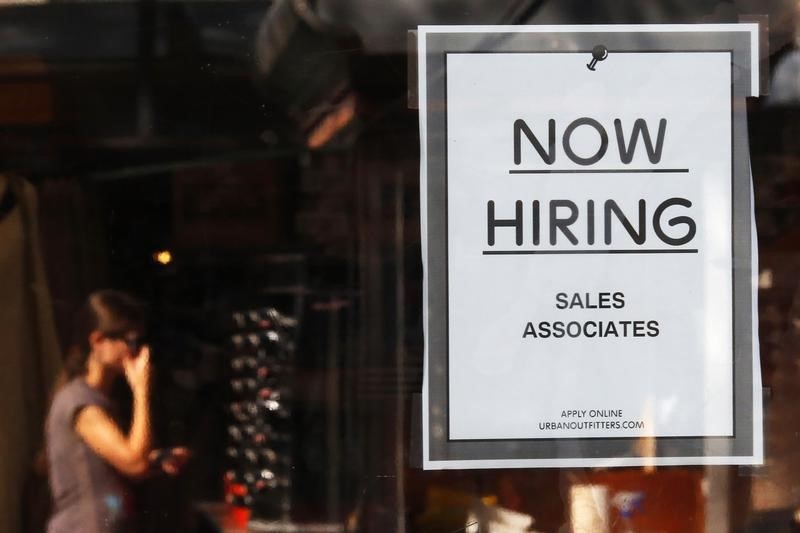* Employment +34,700 s/adj in Dec, beating forecasts of +9,000
* Unemployment rate rises to 5.5 pct as more people look for work
* Labour supply limits much-needed rise in wages, inflation
* Market still sees RBA hike by Aug as no more than 50-50 (Adds analyst reaction)
By Wayne Cole
SYDNEY, Jan 18 (Reuters) - Australian employment jumped past expectations in December to match the longest run of monthly gains on record, yet unemployment still edged up as more people looked for work putting an unwelcome brake on wages and inflation.
Thursday's figures from the Australian Bureau of Statistics showed 34,700 net new jobs were added in December, dwarfing forecasts for a 9,000 rise and a big surprise given it came on top of November's huge 63,600 surge.
That was the 15th straight month of rises, the longest such streak since 1993. That brought gains for all of 2017 to 403,000, with 303,100 of them full-time. Annual jobs growth of 3.3 percent was more than twice the pace of U.S. job creation.
"The jobs market is going gangbusters," said Ryan Felsman, a senior economist at CommSec.
"More Aussies are looking for work, encouraged by the strong jobs market, and more employers are hiring. Is it any wonder that consumer confidence has risen to four-year highs."
Yet the unemployment rate still edged up to 5.5 percent, from 5.4 percent, as more people went looking for work. The participation rate climbed to its highest since January 2011 at 65.7 percent as more women entered the workforce.
With labour supply expanding to more than meet demand, it meant there was less upward pressure on wages and inflation and thus no near-term trigger for a rise in interest rates from the Reserve Bank of Australia (RBA).
That outlook was reflected in the local dollar AUD=D4 which eased a quarter of a cent to $0.7950 on the data.
Interest rate futures 0#YIB: also showed no change in the odds of a rate rise, with a move by August seen as a 50-50 shot. A hike is still not fully priced in until December.
Leading indicators of labour demand do point to further strength ahead. The government's well-regarded measure of job vacancies climbed to a record in the three months to November, notching a sixth straight quarter of solid gains.
WHERE'S THE WAGES?
Yet while firms are snapping up workers, they are not so keen on paying them more, leaving wage growth near record lows in an unwelcome drag on consumer spending and inflation.
The scrooge-like pace of pay rises is a major reason the RBA believes core inflation will not reach the floor of its 2 to 3 percent target band until early 2019, thus arguing against a rate hike anytime soon.
Policy makers have been hoping wages would have to turn higher as the jobs market tightened, but recent data on collective pay deals suggest the opposite.
The latest batch of enterprise bargaining agreements, which in total cover around 36 percent of employees, showed average wage growth slowing sharply to a record-low 2.2 percent.
"The continued decline suggests that expectations on wages are still too optimistic," said UBS economist George Tharenou.
"This reinforces our long-held view that the future rise in wages/CPI will disappoint the hawks despite booming jobs. That's key to our call for no RBA rate hike until the first half of 2019."
